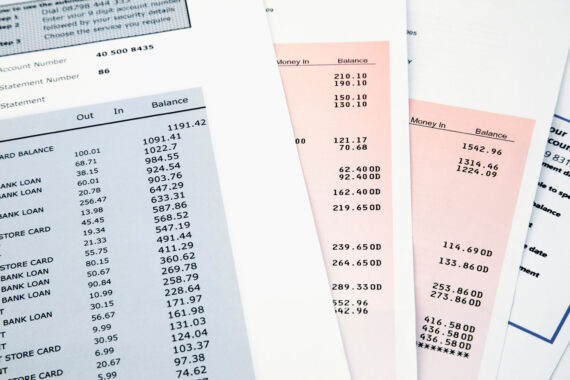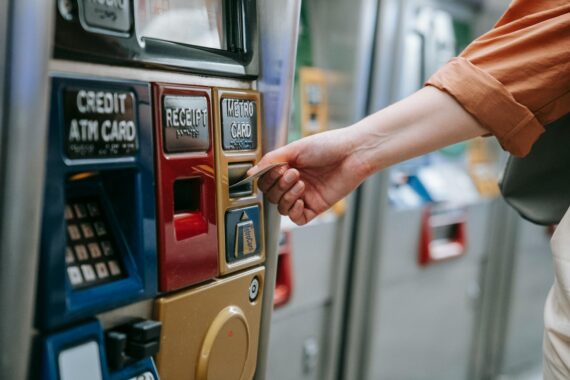Credit card fraud is a significant threat to many Americans each year, and it impacts thousands of people. As fraudsters constantly adapt their strategies to exploit unsuspecting victims, knowing what is credit card fraud can help prevent scams from happening.
According to the Federal Trade Commission (FTC), credit card fraud accounted for nearly 30% of all reported fraud cases in 2022, with losses exceeding $5 billion nationwide. The increasing sophistication of fraudsters and their ability to adapt their strategies make fraud prevention vital.
What Is Credit Card Fraud Exactly?
Credit card fraud is a common form of identity theft, and it claims millions of victims each year. With the widespread use of non-cash options in the United States, which has over 1.5 billion cards in circulation according to statistics, this is a major worry. Criminals can use lost or stolen credit cards to make unlawful purchases, but they do not always require a physical card. In cases of card-not-present fraud, only having access to basic card or account information enables them to conduct illegal transactions and gain access to the victim’s funds.
This type of fraud was reported more than 389,000 times in the US in 2021. The Federal Trade Commission said it was the most common type of identity theft for people aged 20 to 39. And in a 2023 report by the Identity Theft Resource Center (ITRC), it was revealed that 42% of all reported fraud cases were related to credit card fraud. When it comes to losses, according to a 2023 study by Javelin Strategy & Research, Americans lost $8 billion to credit card fraud in 2022, with the average loss per victim reaching $1,500.

The Payment Card Landscape in the US
Payment cards like credit, debit, and prepaid cards are becoming more and more popular in the US. The Nilson Report shows that the overall amount bought reached $10.48 trillion in 2022, which is 11% more than the previous year. Based on those data, it’s clear that people are moving away from using cash for shopping and other payments.
Out of this number, $53 billion, or $5.6 trillion, was spent using credit cards. The other $4.9 trillion, or 47%, was spent with debit and prepaid cards. From 2021 to 2022, credit card spending went up by 19.5%, while debit and prepaid card spending went up by 11%.
How Many Americans Use Debit and Credit Cards?
Data from the Federal Reserve shows that debit cards are the most widely used form of payment card in the US. In 2021, approximately 242.7 million adults, or 93% of the population, had a debit card. Credit card ownership was also high, with 214 million adults, or 82% of Americans, holding a credit card in 2022. With this number of cardholders in the US alone, prevention is extremely important.
Noncash Payment Statistics for 2021
The table below provides an overview of noncash payment trends in the United States in 2021. It breaks down the number of transactions, total value, and average transaction size for various payment types, including debit cards, credit cards, prepaid cards, and electronic benefits transfers (EBT).
| Noncash payment type | Number (billions) | Value ($ trillions) | Average ($) |
|---|---|---|---|
| Total | 204.5 | 128.51 | 628 |
| Cards (all types) | 157 | 9.43 | 60 |
| Debit cards | 106 | 4.55 | 43 |
| Credit cards | 51.1 | 4.88 | 95 |
| Electronic benefits transfer (EBT) | 4 | 0.16 | 39 |
How Credit Card Fraud Works
This type of fraud involves various methods through which criminals exploit a person’s credit card information to make unauthorized transactions or gain access to funds. Merchants of all sizes, small to large ones, can be vulnerable to such threats, as fraudsters use different techniques to scam people.
Lost or Stolen Cards
Scammers may obtain cards by stealing them or finding them after they’ve been lost. While using the card in person may require a PIN, the card details can still be used for online shopping. This way, criminals can make unauthorized transactions without needing a physical card.
Card-Not-Present Fraud
This form of fraud occurs without the thief ever handling the actual card. Criminals can obtain basic card information, such as the account number, expiration date, and cardholder’s name, which they then use for online, phone, or mail transactions. They often acquire these details through data breaches, phishing scams, or even receipts and documents containing card information.
Counterfeit and Altered Cards
Skimming devices attached to ATMs or point-of-sale terminals capture data from a card’s magnetic strip. Criminals use this information to create fake cards or modify existing ones for fraudulent transactions. These skimming devices are often difficult to spot because they are designed to blend in with regular card readers.
Application Fraud
In this case, instead of using someone’s existing credit card, criminals apply for a new credit card in the victim’s name using stolen personal information. They use the victim’s name, Social Security Number, and address. Sometimes, they even gather supporting documents to make the application appear legitimate which makes it possible to open accounts in banks under the victim’s identity.
Account Takeover
When fraudsters have sufficient information, such as passwords, past transactions, and card details, they can contact the issuing bank and impersonate the account holder. They may change the account details, request a new card, or even report the original card as lost to receive a replacement. This is often achieved through social engineering tactics, where the fraudster manipulates the company’s customer service representative.
Intercepting Cards Sent by Mail
When a new or replacement card gets sent through the mail to the client, it can be intercepted by criminals before reaching the account holder. For this reason, many card issuers take precautions by sending cards in unmarked envelopes to avoid drawing attention to them.
How This Type of Fraud Affects Merchants
Although the main victim of this type of scam is the cardholder, it can also significantly impact a merchant. This fraud can lead a business to financial losses and operational challenges. Here are some ways in which this type of fraud affects businesses:
- When fraudulent transactions are reported, the merchant is often required to refund the full amount to the cardholder, resulting in a chargeback. In addition to losing sales revenue, businesses may face chargeback fees imposed by payment processors.
- Fraudulent activities force businesses to invest in advanced security measures, such as fraud detection software, employee training, and more secure payment systems. These expenses add up, and they raise the overall cost of running the business.
- In cases where fraudulent purchases involve physical goods, merchants lose not only the payment but also the products that were shipped. This can result in significant inventory loss, especially when it comes to high-value items.
- Merchants associated with frequent fraud incidents may suffer damage to their reputations. Customers may feel less confident about the security of their payment information which results in decreased trust and potentially lost business. A damaged reputation can also affect future partnerships and vendor relationships.
- Merchants with a high number of chargebacks or fraud incidents may be classified as high-risk by credit card processing companies. As a result, they could face higher payment processing fees or more restrictive payment terms.
- If fraud incidents occur repeatedly, a credit card processing company may freeze the merchant’s account or even terminate their service agreement. This can disrupt cash flow and business operations and affect card acceptance at the terminal.
- A merchant could face legal action or be required to comply with additional regulatory requirements. This may involve audits, fines, or legal fees that become an added strain on the company’s resources.
In the end, merchants need to understand the impact of credit card fraud so they can thoughtfully implement different strategies for detection and prevention. This could minimize risks and save the business from potential losses.

What Can a Merchant Do to Prevent This Type of Fraud
There are a number of things that merchants can do to protect their businesses from credit card scams. Using advanced security measures, like encryption and tokenization, can help keep customers’ payment information safe while they’re shopping.
Fraud spotting tools, like address verification services (AVS) and card verification value (CVV) checks, can help make sure that a transaction is real. To reduce risks, businesses should also make sure that their payment systems have the most recent security patches and software.
Fraudulent purchases can also be stopped by teaching employees how to spot signs of fraud, like strange customer behavior or differences in the card information. Next, setting clear rules for returns and refunds can help stop scammers from taking advantage of these systems. Last but not least, requiring multi-factor authentication and using risk-based authentication methods can make online transactions even safer.
How Can a Consumer Protect Themselves?
The best defense against credit card fraud is prevention. Customers should always keep their cards secure, only enter details on trusted websites, and avoid sharing sensitive information with unverified sources over the phone. There are also several things they could do to stay alert of possible fraud.
Consumers should regularly review their monthly credit card statements for unfamiliar or unauthorized charges, as even small transactions could signal a fraudster testing the card. They should also monitor their credit reports for any unusual activity, such as unfamiliar credit inquiries, newly opened accounts, or changes to their personal information. They should also check bills and invoices, and inquire with the credit card company whether they offer identity theft monitoring services.

The Importance of a Reliable Credit Card Processor
A business needs to find a trustworthy processor who offers merchant services and credit card processing because it affects the safety of transactions and the general customer experience. A good processor offers safe ways to pay, and improved tools for detecting fraud, which help merchants quickly spot and stop fraudulent activity.
A good payment provider also makes sure that industry standards are followed, like PCI-DSS. This lowers the risk of data breaches and financial losses. Businesses can protect their bottom line and build customer trust by working with a processor they can trust.

Protect Your Business From Credit Card Fraud With Merchant Chimp
Credit card fraud is still a big problem for both customers and businesses because scammers are always changing their methods to take advantage of weak spots. Merchants can protect their businesses and customers from credit card fraud by learning how it happens and taking steps to find and stop it.
For businesses looking to enhance their payment security, Merchant Chimp offers secure credit card processing services and a range of other merchant solutions. Our advanced fraud prevention tools and cutting-edge technology help protect your business. Partner with Merchant Chimp today and enhance your payment processing experience.







